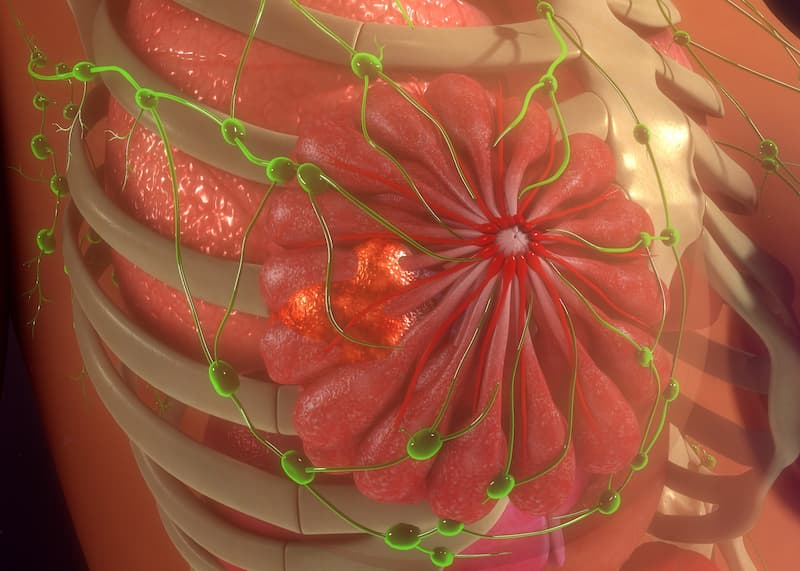Tislelizumab Triplet Shows Meaningful Responses, PFS in Metastatic TNBC
Phase 2 data indicate that CD8 status may serve as a biomarker for predicting treatment efficacy with tislelizumab-based treatment in TNBC.
Phase 2 data indicate that CD8 status may serve as a biomarker for predicting treatment efficacy with tislelizumab-based treatment in TNBC.

Combining tislelizumab-jsgr (Tevimbra) with sitravatinib (MGCD516) and nab-paclitaxel (Abraxane) produced meaningful responses and progression-free survival (PFS) in a small cohort of patients with untreated locally advanced or recurrent triple-negative breast cancer (TNBC), according to findings from the phase 2 SPARK trial (NCT04734262) presented in a poster session at the 2024 San Antonio Breast Cancer Symposium (SABCS).
The triplet produced an objective response rate (ORR) of 75.7% (95% CI, 58.8%-88.2%) per RECIST v1.1 criteria. Data showed complete responses among 7 patients (18.9%), partial responses in 21 (56.8%), stable disease in 8 (21.6%), and progressive disease in 1 (2.7%). Additionally, treatment yielded a disease control rate (DCR) of 97.3% (95% CI, 85.8%-99.9%).
Data showed a median PFS of 10.6 months (95% CI, 7.9-15.8) among all evaluable patients. Among patients with CD8-positive disease and CD8-negative disease, respectively, the median PFS was 15.8 months and 9.1 months. Additionally, the median PFS was 12.3 months for patients with a PD-L1 combined positive score (CPS) of 1 or higher and 10.6 months for those with a PD-L1 CPS of less than 1.
The median overall survival (OS) was not reached at the time of analysis. At 1 year, the OS rate was 91.0% (95% CI, 74.6%-97.0%).
“The triplet combination of [tislelizumab plus sitravatinib and nab-paclitaxel] demonstrated clinically meaningful ORR and PFS with acceptable safety profile as first-line treatment for patients with untreated locally recurrent or metastatic TNBC,” Xiyu Liu, from Fudan University Shanghai Cancer Center in Shanghai, China, and coauthors wrote. “Notably, patients with [CD8-positive] expression achieved impressive PFS, indicating the CD8 status may serve as a potential biomarker for predicting treatment efficacy. Continued follow-up is being conducted to assess long-term survival and safety.”
The SPARK trial included 3 cohorts of patients with locally recurrent or metastatic TNBC. Those who received 3 or fewer prior lines of therapy were assigned to receive sitravatinib at 70 mg orally once daily plus tislelizumab at 200 mg intravenously every 3 weeks in cohort A (n = 21) or sitravatinib at 100 mg orally once daily plus tislelizumab at 200 mg intravenously once every 3 weeks in cohort B (n = 40). Patients without prior therapy for advanced TNBC were assigned to receive sitravatinib at 70 mg orally once daily plus tislelizumab at 200 mg intravenously every 3 weeks and nab-paclitaxel on days 1 and 8 of each cycle every 3 weeks in cohort C (n = 35). Findings from cohort C were reported in this poster.
The trial’s primary end points were ORR across all cohorts and grade 3 or higher treatment-related adverse effects (TRAEs) in cohort B. Secondary end points included duration of response, DCR, PFS, 1-year OS rate, patient-reported outcomes, and safety. Patients 18 years and older with locally recurrent or metastatic TNBC, an ECOG performance status of 0 or 1, and measurable lesions per RECIST v1.1 guidelines were eligible for enrollment on the trial.
Among 37 evaluable patients in cohort C, the median age was 49 years (range, 28-73), and most patients had an ECOG performance status of 0 (67.6%). A majority of patients in cohort C had prior neoadjuvant or adjuvant therapy (56.8%), 0 to 2 metastases (70.3%), and CD8-negative disease (54.1%).
Among patients who were considered poor responders, which included those who achieved stable or progressive disease following therapy, gene set enrichment analysis showed enrichment in pathways associated with inflammatory responses, myelocytomatosis oncogene regulation, type I interferon, E2F regulation, and the IL-6/JAK/STAT3 signaling pathway. Gene Ontology analysis data also highlighted enriched pathways associated with immunoglobulin and IgA-mediated immune responses in this subgroup.
TRAEs of any grade occurred in 97.3% of patients, and grade 3 or higher events were reported in 43.2%. Additionally, 29.7% of patients experienced serious AEs, and investigators reported no new safety signals. The most common any-grade TRAEs included increased alanine aminotransferase (86.5%), white blood cell count decreases (75.7%), increased aspartate aminotransferase (73.0%), increased blood thyroid stimulating hormones (73.0%), and swollen palmar and plantar syndrome (54.1%).
Reference
Liu X, Sui X, Xu Y, et al. Tislelizumab plus sitravatinib and nab-paclitaxel in patients with untreated locally recurrent or metastatic triple negative breast cancer (TNBC): updated efficacy and safety results. Presented at: 2024 San Antonio Breast Cancer Symposium; December 10-13, 2024; San Antonio, TX. PS3-01.